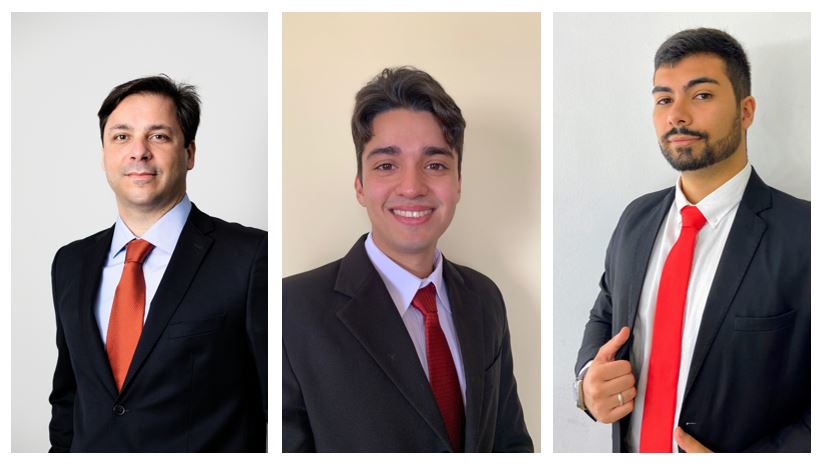 *By Rafael Lacaz Amaral, Victor André Santos de Lima and Antonio Pablo Calderón Saad
*By Rafael Lacaz Amaral, Victor André Santos de Lima and Antonio Pablo Calderón Saad
The software industry grows annually due to the constant demand for new technologies, which are part of the routine of contemporary society, whether for work or leisure. According to the 2023 report by ABES and IDC (International Data Corporation), global IT production grew by 7.4% in 2022, with growth being 11%[1] in 2021. Considering the relevance of this market for the global economy and society, it is crucial to understand the legal systems that ensure legal security for holders in market relations.
In Brazil, the intellectual property protection regime for computer programs is the same as that granted to literary works, that is, the copyright and related rights legislation (art. 2, Software Law). Thus, it appears that the legislator, following the logic of the TRIPS Agreement (Agreement on Trade-Related Aspects of Intellectual Property Rights), chose to protect the source code of the computer program, comparing it to a literary work, whose protection of the holder's rights is independent of registration (art. 2, §3, Software Law).
However, even though registration is not necessary for software protection, this formality serves as a means of proof in the event of a dispute, which guarantees more legal security for the holder and third parties interested in the computer program.
Furthermore, according to art. 3.1 of the Berne Convention for the Protection of Literary and Artistic Works, which has more than 150 signatory countries, authors who are nationals of one of the unionist countries will have their works protected in all signatory countries. In other words, this Convention provides protection for the holder of extraterritorial software. In this way, software registration carried out at the National Institute of Industrial Property (INPI) can also serve as a means of proof in other signatory countries.
It is also important to highlight that protection relating to software rights will be guaranteed for a period of fifty (50) years, counting from January 1st of the year following its publication, in accordance with Law 9,609/ 88 (Software Law).
However, the same protection logic does not apply to the distinctive sign of the software. This intellectual protection regime is carried out through the trademark (art. 122 of the LPI), whose registration guarantees exclusive right to use only in the national territory.
According to art. 122, caput, of Law 9,279/96, the Industrial Property Law, visually perceptible distinctive signs are susceptible to registration as a trademark, being in force for a period of ten (10) years from the date of granting the registration, and may be extended for periods equal and successive.
The granting of software trademark registration by the National Institute of Industrial Property will depend on the analysis of the ability to differentiate between other services, products and similar brands, with the main objective of avoiding consumer errors when associating one brand with another. The aforementioned collision analysis has as a fundamental condition the principle of distinctiveness, so that the distinctive sign of the brand will be observed, that is, the identification of its property, origin and differentiation from other similar services or products.
In this context, software registration in itself does not guarantee the exclusive use of the brand in the country, nor does it protect its distinctive sign in other countries.
Therefore, in addition to worrying about the development and protection of the software's source code, the program owner must (i) carry out or hire a specialized professional to conduct a previous search, in order to verify whether the sign has already was used by a third party, as well as to evaluate possible risks of using that trademark in the market, and (ii) deposit or hire a specialized professional to deposit the software trademark – only in Brazil or in other countries as well.
Given the significant growth of the software industry and its importance for the global economy, it is essential to adopt precautionary measures to fully preserve the rights of the holder. This not only ensures the necessary legal security, but also promotes fair competition in this dynamic and disruptive market.
* Rafael Lacaz Amaral. Lawyer and Partner at Kasznar Leonardos Advogados. Specialized in Legal Litigation in Intellectual Property. Head of the Legal Litigation, Anti-Piracy, Brand Protection and License Compliance team.
*Victor André Santos de Lima, lawyer and team leader at Kasznar Leonardos Advogados. Works with Anti-Piracy, Software Compliance, Digital Law and Copyright Law. Master's student in Intellectual Property and Technology Transfer at UFRJ and Postgraduate in Civil Procedural Law at PUC-MG. President of the OAB/DC Intellectual Property Committee, Co-Founder of LAPI-UFRJ and Member of DEPIS
*Antonio Pablo Calderón Saad, Legal Assistant of the Digital Anti-Piracy and License Compliance team at Kasznar Leonardos Advogados. Graduating in Law from Universidade Federal Fluminense. Works with Software Compliance, Intellectual Property, Brand Protection and Negotiation.
Notice: The opinion presented in this article is the responsibility of its author and not of ABES - Brazilian Association of Software Companies
____
[1] https://abes.com.br/dados-do-setor/
BIBLIOGRAPHIC REFERENCES
Law 9,610, February 19, 1998. Provides for Copyright. Official Gazette of the Union, Brasília, DF, 20 Feb. 1998. Available on here. Accessed on: 13 Feb. 2024.
Law 9,609, of February 19, 1998. Provides for the protection of intellectual property of computer programs, their commercialization in the country, and provides other measures. Brasília, DF, 1998. Available on here. Accessed on: 14 Feb. 2024.
Intellectual Property Manual – UNESP/NEAD. Sao Paulo-SP. Available on here. Accessed on 14 Feb. 2024.
Brand Manual – INPI. Brasília, DF, 2023. Available on here. Accessed on 13 Feb. 2024.














